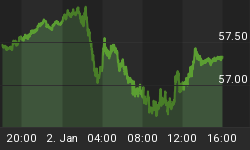The September Japanese Yen is surging to the upside overnight for a couple of reasons. The first and main reason is flight-to-safety. The second reason is the call for nations to diversify away from the U.S. Dollar.
Global equity and commodity markets are down sharply in European and Asian markets. This is expected to spread to the U.S. markets when they open in a couple of hours. The current weakness in the equity markets was triggered by a larger than expected U.S. job loss in June. This news was reported on July 2nd but many traders took the day off ahead of the U.S. market holiday on Friday. The weakness overnight is expected to trigger a sharply lower opening as traders who missed the move on Thursday are expected to pick up the selling where it left off on Thursday.
The September Japanese Yen is rallying sharply higher overnight as traders seek the safety of lower yielding assets. The rally is a continuation of the move from the bottom which started in early June when the equity markets topped and Thursday's flight-to-safety rally following the release of the bearish U.S. unemployment number.
The weakness in the equity markets is causing Japanese investors to repatriate investments in higher yielding assets which were purchased to combat the excessively lower yields in Japan. Traders who borrowed Yen at cheap rates in an effort to leverage their investments in higher risk assets are also buying Yen to pay back loans.
Flight-to-safety buying is not the only reason for the rally in the Japanese Yen. Longer-term traders believe that the Japanese Yen will benefit if the central banks get behind the movement to reduce the U.S. Dollar's role as the world's reserve currency.
China, Russia and India are expected to introduce the topic of reducing the world's reliance on the U.S. Dollar as the premier currency at this week's G-8 meeting. Russia commented over the week-end that the system is "flawed." India's finance minister is urging his nation to reduce its U.S. Dollar holdings. The French also joined the movement by stating their opinion that the system should be improved.
The best sign that the trend is beginning to shift away from the Dollar was the move by three Chinese corporations to settle imports and exports in Yuan. This move marked the first time that contracts were settled this way and was designed to make the Yuan more attractive to central banks.
The Yen could benefit if the Dollar losses its luster as the most popular reserve currency because central banks are likely to spread the reserves among the Yen, Yuan, Euro and U.S. Dollar.
Technically the main trend is down but the higher bottom at 1.0320 and the subsequent rally has put the September Japanese Yen in a position to take out the recent top at 1.0551. The trend will change to up at this point and could accelerate to the up side to challenge another main top at 1.0598 and 1.0664.
Gains could be limited if the Bank of Japan speaks up about the rapid appreciation in the Yen. Recent rallies have been halted by commentary by the BoJ as they expressed their concern that a higher priced Yen will hurt exports. This form of "verbal intervention" has been highly effective in the past when volatility and prices rose too rapidly.
Stock indices are called sharply lower this morning based on selling pressure in Europe and Asia. This break is a continuation of the down move which began on July 2nd following the release of the bearish U.S. Non-Farm Payrolls Report. Traders have to be careful selling into this break on the opening. Although the September E-mini S&P 500 took out last month's low at 884.25, the follow-through to the downside hasn't been that great.
Often after a sharp sell-off like we are experiencing after a holiday, traders fade the opening to trigger a rally to sell later in the day. Watch out for a bear trap early in the trading session. The rally from the current low can be spectacular if triggered by short-covering and bottom picking.
The stronger Dollar and the lack of the need for a hedge against inflation should keep pressure on commodity prices over the near term. Gold and Crude Oil are particularly vulnerable.
















